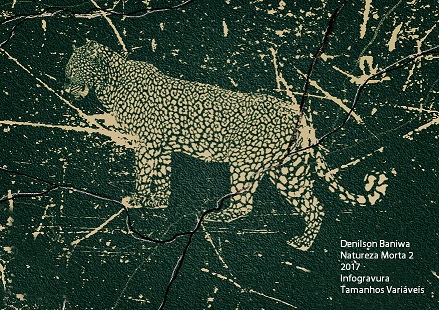Beastly Modernisms: The Question of Animal Speech and Psychology in James Joyce and Virginia Woolf
DOI :
https://doi.org/10.54103/2035-7680/16799Mots-clés :
James Joyce; Virginia Woolf; posthumanism; animals; language; psychologyRésumé
This essay analyses the ways in which James Joyce and Virginia Woolf addressed from a very early stage key issues related to contemporary posthumanist theories such as the question of animal speech and psychology. Both Joyce’s description of human-animal encounters in Ulysses and Woolf’s depiction of a sentient animal subject in Flush: A Biography at first present, and then subvert, the idea of the use of language as evidence of a human surpassing of the animal. By challenging preconceived notions of species distinctions, these authors ultimately decenter the human to focus instead on the centrality of animal subjectivity and sensory experience. While the question of a sharp divide between human and nonhuman animals along the axis of speech can be traceable to the anthropocentric tradition of western humanism and not least to such a possible source as Cervantes (whose novella “The Dialogue of the Dogs” is listed as part of both Joyce’s Trieste library and the library of Leonard and Virginia Woolf), the idea of expanding the typically modernist focus on inner life by also including other forms of subjectivity may have derived from the coeval, burgeoning fields of zoology, ethology and comparative psychology. Drawing from these sources and popular areas of knowledge which formed part of the cultural climate of the time, both Joyce and Woolf explore cross-species intersubjectivity in ways that shift the terms of representation away from anthropocentric views in order to affirm, blur and deny the boundaries between the human and the non-human.
Statistiques
Références
Agamben, Giorgio. The Open: Man and Animal. Translated by Kevin Attell, Stanford University Press, 2002.
Budgen, Frank. James Joyce and the Making of “Ulysses” and Other Writings. Oxford University Press, 1972.
Darwin, Charles. The Descent of Man, and Selection in Relation to Sex, 2 vols, vol. 1, John Murray, 1871.
Dubino, Jeanne. “The Bispecies Environment, Coevolution, and Flush.” Virginia Woolf: Twenty-First-Century Approaches, edited by Jeanne Dubino et al., Edinburgh University Press, 2015, pp. 131-147.
Ellmann, Maud. “Ulysses: Changing into an Animal.” Field Day Review, vol. 2, 2006, pp. 74-93.
Gillespie, Michael Patrick. James Joyce’s Trieste Library: A Catalogue of Materials at the Harry Ransom Humanities Research Center, The University of Texas at Austin. Harry Ransom Humanities Research Center, 1986.
Haraway, Donna. “A Cyborg Manifesto: Science, Technology, and Socialist-Feminism in the Late Twentieth Century.” Simians, Cyborgs, and Women: The Reinvention of Nature. Routledge, 1991, pp. 149-181.
---. When Species Meet. University of Minnesota Press, 2008.
Herman, David. “Modernist Life Writing and Nonhuman Lives: Ecologies of Experience in Virginia Woolf’s Flush.” Modern Fiction Studies, vol. 59, no. 3, 2013, pp. 547-568.
Hovanec, Caroline. Animal Subjects: Literature, Zoology, and British Modernism. Cambridge University Press, 2018.
Ittner, Jutta. “Part Spaniel, Part Canine Puzzle: Anthropomorphism in Woolf’s Flush and Auster’s Timbuktu.” Mosaic, vol. 39, no. 4, 2006, pp. 181-196.
Johnson, Jamie. “Virginia Woolf’s Flush: Decentering Human Subjectivity through the Nonhuman Animal Character.” Virginia Woolf Miscellany, vol. 84, 2013, pp. 34-36.
Joyce, James. Ulysses, edited by Hans Walter Gabler et al., Garland, 1984. Cited parenthetically as U by episode and line number.
Kendall-Morwick, Karalyn. “Mongrel Fiction: Canine Bildung and the Feminist Critique of Anthropocentrism in Virginia Woolf’s Flush.” Modern Fiction Studies, vol. 60, no. 3, 2014, pp. 506-526.
King, Julia, and Laila Miletic-Vejzovic, editors. The Library of Leonard and Virginia Woolf: A Short-title Catalog. http://ntserver1.wsulibs.wsu.edu/masc/onlinebooks/ woolflibrary/woolflibraryonline.htm. Accessed 19 Jan. 2021.
Latour, Bruno. We Have Never Been Modern. Translated by Catherine Porter, Harvard University Press, 1993.
Morgan, Lloyd. An Introduction to Comparative Psychology. Walter Scott, 1894.
Plock, Vike Martina. “Bodies.” The Cambridge Companion to “Ulysses” edited by Sean Latham, Cambridge University Press, 2014, pp. 184-199.
Rando, David. “The Cat’s Meow: Ulysses, Animals, and the Veterinary Gaze.” James Joyce Quarterly, vol. 46, no. 3-4, 2009, pp. 529-543.
Ryan, Derek. Virginia Woolf and the Materiality of Theory: Sex, Animal, Life. Edinburgh University Press, 2013.
Scott, Bonnie Kime. In the Hollow of the Wave: Virginia Woolf and Modernist Uses of Nature. University of Virginia Press, 2012.
Smith, Craig. “Across the Widest Gulf: Nonhuman Subjectivity in Virginia Woolf’s Flush.” Twentieth Century Literature, vol. 48, no. 3, 2002, pp. 348-361.
Sultzbach, Kelly. Ecocriticism in the Modernist Imagination: Forster, Woolf, and Auden. Cambridge University Press, 2016.
Washburn, Margaret. The Animal Mind: A Text-book of Comparative Psychology. 3rd ed., Macmillan, 1926.
Wolfe, Cary. “Flesh and Finitude: Thinking Animals in (Post)Humanist Philosophy.” SubStance, vol. 37, no. 3, 2008, pp. 8-36.
Woolf, Virginia. Flush: A Biography. The Hogarth Press, 1933.
Wylie, Dan. “The Anthropomorphic Ethic: Fiction and the Animal Mind in Virginia Woolf’s Flush and Barbara Gowdy’s The White Bone.” Interdisciplinary Studies in Literature and Environment, vol. 9, no. 2, 2002, pp. 115-131.
Téléchargements
Publié-e
Comment citer
Numéro
Rubrique
Licence

Cette œuvre est sous licence Creative Commons Attribution - Pas d’Utilisation Commerciale - Pas de Modification 3.0 non transposé.




